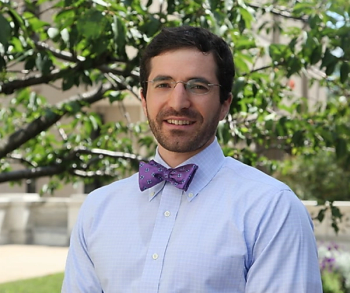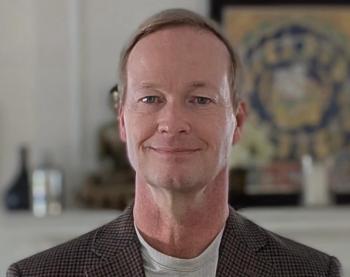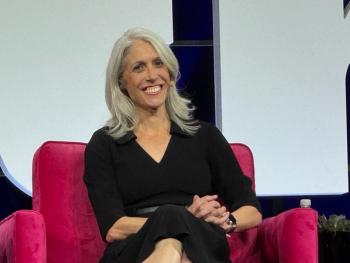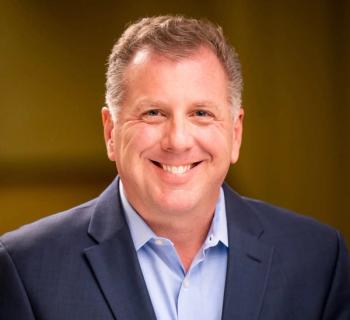
Improving patient safety requires a commitment to health equity
Main Line Health CEO Jack Lynch says it’s impossible to talk about better outcomes without focusing on closing disparities in underserved groups.
Jack Lynch describes a moment when a light bulb went on in his head.
Lynch, the president and CEO of Main Line Health, recalls a conversation he had with a Black healthcare colleague working at another health system about five years ago. He asked if his colleague’s CEO thought there were racial disparities in the system’s emergency department, and the colleague said, “No.”
When Lynch asked his colleague if thought there was disparities in emergency care, the response was, “Absolutely.”
“What it caused me to believe is that many, many, many CEOs and C-suite leaders and boards don't have a line of sight, and clinicians don't have a line of sight, into these terrible disparities of care,” Lynch says.
For years, Main Line Health has developed dashboards measuring patient outcomes in key areas such as readmissions and infections. More recently, Main Line has been able to produce data showing outcomes by race, ethnicity and type of insurance, Lynch says.
“Most health systems don’t have line of sight to that level of detail,” Lynch says.
- Read more:
Facing challenges, Main Line Health shines
The American Hospital Association recently awarded
In a recent interview with Chief Healthcare Executive®, Lynch speaks passionately about the need to close disparities, making all patients feel welcome, and improving diversity in health systems.
“We have a lot of people on our team that buy into the fact that having a diverse team will likely contribute to eliminating and understanding health disparities differently than you would if you didn't have a diverse team,” Lynch says.
“I wouldn't put us out as the model of a diverse team,” he continues. “But I would put us out as a model committed to eliminating disparities of care, having conversations that are uncomfortable and measuring things that many don't measure.”
(See part of our conversation with Jack Lynch in this video. The story continues below.)
Closing disparities
Lynch has served as president and CEO of Main Line Health since 2005. The system, based in the Philadelphia suburbs, operates four acute care hospitals and a rehabilitation hospital.
He says work to improve care for all patients was underway when he arrived. But Lynch says he made one policy change after his arrival; patients could no longer request a clinician of a different race or ethnicity.
- Read more:
Health equity can’t be a side hustle
In some cases, Lynch says, the customer isn’t always right.“When we were doing that, in this industry, we were disrespecting the caregivers, and satisfying the patient, but really, really disrespecting the caregiver,” Lynch says.
For more than a decade, Main Line has held an annual colloquium examining where disparities in care exist, looking at issues such as cancer screenings and other potentially problematic areas.
“What that's done is it's allowed us to learn a new language, about how to talk about things that are very uncomfortable to talk about for a lot of people,” Lynch says.
Now, Main Line produces detailed reports looking at areas such as infections, sepsis, and birth complications, and the system can compare outcomes among Black, Hispanic, and Asian patients against outcomes for white patients.
“I think the first step in all of this work, is having the ability to stratify your data to identify where there's opportunities for improvement,” Lynch says.
“And all of this comes back to … why should a white male get better access to care, have people listen to them more carefully than they listen to others, have care occur more quickly, have care that could arguably be described as more appropriate than anybody else, regardless of their ability to pay?”
Lynch also talked about the realization that some members of minority groups are leery of going to a doctor or a hospital. He pointed to the fear that some Black mothers experience when they go to a hospital to deliver their baby.
“Why does a minority or a member of the LGBTQ community come to a healthcare facility scared?” Lynch asked, adding, “That's not right.”
“The foundation of our work is all about eliminating these disparities of care,” Lynch says. “And you can't eliminate anything until you figure out where it is. And you can't eliminate it once you find it until you talk to the people that are experiencing it. And you can't eliminate it once you find it and talk to the people that you expect that are experiencing it, unless you're committed to making the change that's required to provide equitable care.”
Key to patient safety
Lynch says if health systems are serious about improving patient outcomes, they must focus on closing disparities among those in minority groups and disadvantaged communities.
“I contended a number of years ago that you're kidding yourself if you're committed to quality and safety, and you're not committed to equity,” Lynch says. “Because what that says to me is, ‘I'm committed to safety and quality for people that look like me.’
“And when an institution says, ‘We're committed to equity, and the elimination of disparities of care,’ that says, ‘We're not just concerned about the people who look like me. We're concerned about every single person in our community.’ And, you know, quite frankly, that's why these institutions exist, is to take care of our communities,” he adds.
Lynch adds that there’s still room for Main Line to get better, and he acknowledges his health system is based in one of the Philadelphia area’s more affluent areas.
“I would say, I don't care how diverse your employees are, or how diverse your patients are,” Lynch says. “You should be looking at whether everybody that's getting care and working for you, is being treated in an equitable way.”
“I think every one of us has an opportunity to focus our work around equity. And, you know, I get pretty upset when I hear about people concerned about the term diversity, equity inclusion, or white privilege,” Lynch says. “White privilege is a fact.”
Main Line shares the system’s dashboards measuring disparities in outcomes with other hospitals and health systems, Lynch says. That’s one area where he invites others to copy what Main Line is doing. “I want them to look at it and say, ‘How the hell do we produce the same report for our own institution?’”
Lynch says health equity is at the heart of the system’s mission.
“We're passionate about it,” Lynch says. “We are not perfect.”
Still, Lynch says, “At Main Line, we take our responsibility of doing our very best at constantly improving access to care for people who are historically disenfranchised, or don't have access.”








































